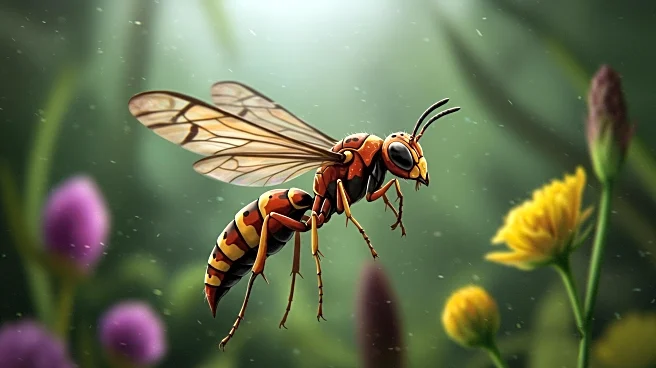What's Happening?
Scientists have identified two species of parasitic wasps, previously unknown in the United States, that are typically found in Europe and parts of northern Asia. These wasps, belonging to the Bootanomyia Girault family, were discovered during research on oak gall wasps, which create growths on oak trees. The parasitic wasps lay their eggs inside these galls, where their larvae consume the oak gall wasp larvae. The introduction of these wasps to the U.S. is believed to be linked to the transportation of goods or the planting of non-native oak trees. This discovery highlights the movement of species across continents and their potential impact on local ecosystems.
Why It's Important?
The presence of these European parasitic wasps in the U.S. could have significant ecological implications. Parasitic wasps play a crucial role in controlling insect populations, including those that are pests to crops and forests. Their introduction could disrupt local ecosystems by affecting the balance of native species. This discovery underscores the importance of biodiversity research in understanding the movement and impact of non-native species. The wasps' role as biological control agents makes them essential for maintaining ecological balance, but their introduction could also pose risks to native species and ecosystems.
What's Next?
Researchers will likely continue to monitor the spread of these parasitic wasps to assess their impact on local ecosystems. Further studies may focus on understanding how these wasps interact with native species and the potential long-term effects on biodiversity. Efforts to manage or mitigate their impact may involve strategies to control their population or prevent further introductions. The findings could also inform policies on the transportation of goods and the planting of non-native species to prevent similar occurrences in the future.













